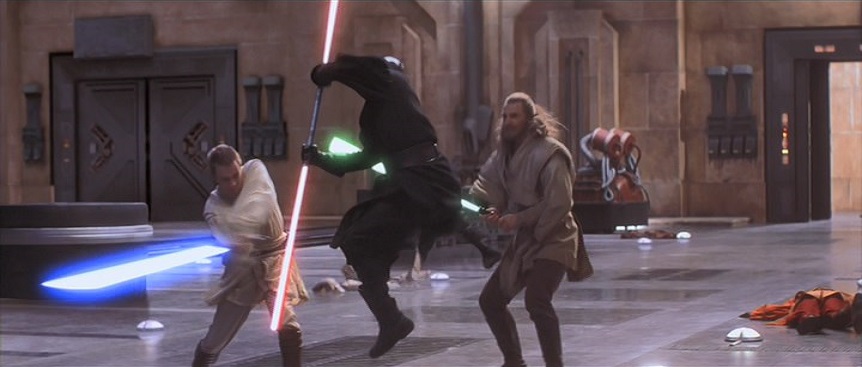
 |
| Photo © 1999 LucasFilm/20th Century Fox |
| Academy Award Nominations: | |
| Best Sound: Gary Rydstrom, Tom Johnson, Shawn Murphy, and John Midgley | |
| Best Sound Effects: Ben Burtt and Tom Bellfort | |
| Best Visual Effects: John Knoll, Dennis Muren, Scott Squires, and Rob Coleman | |
| Permalink | Home | 1999 | ABC | Blog |